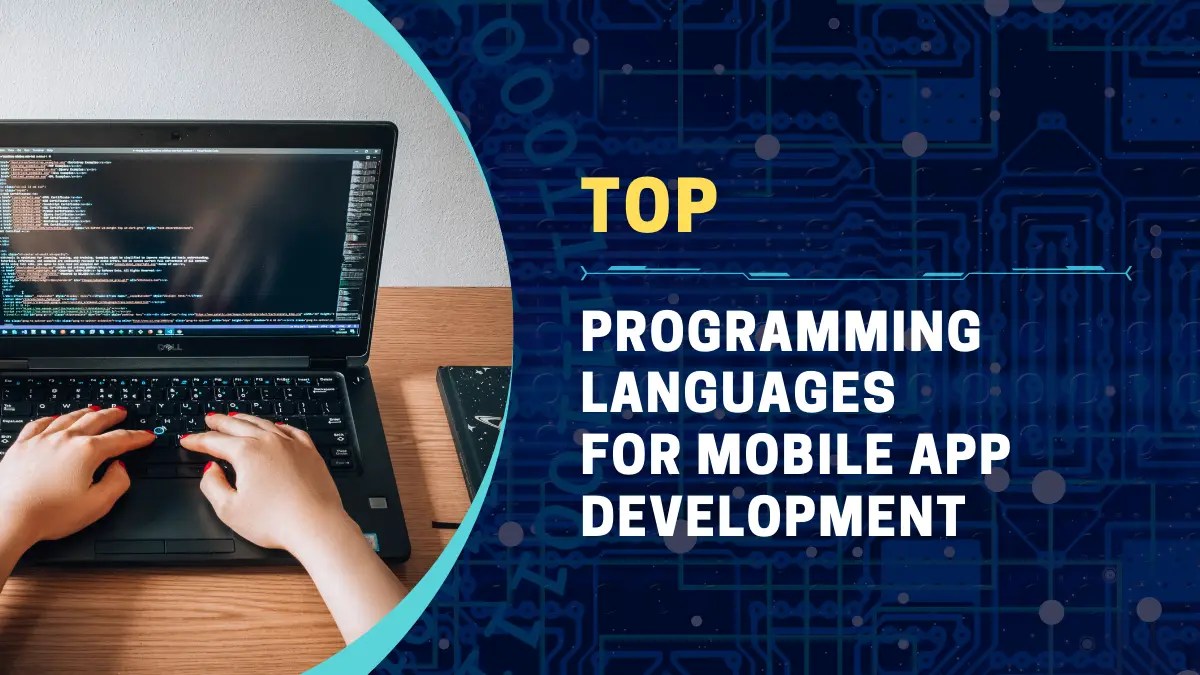When developing a mobile app, selecting the right programming language is a critical decision. It impacts not only the app’s performance and security but also development speed, maintenance, and future scalability. The best language for a project depends on various factors, including the target platform, app complexity, developer expertise, and long-term goals.
In this article we are going to explore Top Programming Languages for Mobile App Development in 2025.
Native vs. Cross-Platform Development
Developers have two primary options when it comes to building mobile apps:
- Native Development: Apps are built specifically for a single platform (iOS or Android) using platform-specific languages. This approach delivers high performance, better user experience, and full access to platform features.
- Cross-Platform Development: A single codebase is used to create apps that run on both iOS and Android. While this approach saves time and effort, it may have performance limitations compared to native apps.
Choosing between native and cross-platform development depends on the app’s objectives, budget, and expected performance. Native apps are generally preferred for resource-intensive applications, while cross-platform solutions work well for faster deployment with a wider reach.
Key Factors to Consider
When choosing a programming language for mobile app development, developers should evaluate:
- Performance: The efficiency of the language in handling complex operations and optimizing speed.
- Scalability: How well the language supports future updates and expansion.
- Ease of Development: Developer-friendliness, community support, and available tools.
- Security: The ability of the language to prevent vulnerabilities and threats.
- Integration: Compatibility with APIs, frameworks, and third-party services.
Now, let’s explore the top programming languages used for native iOS development.
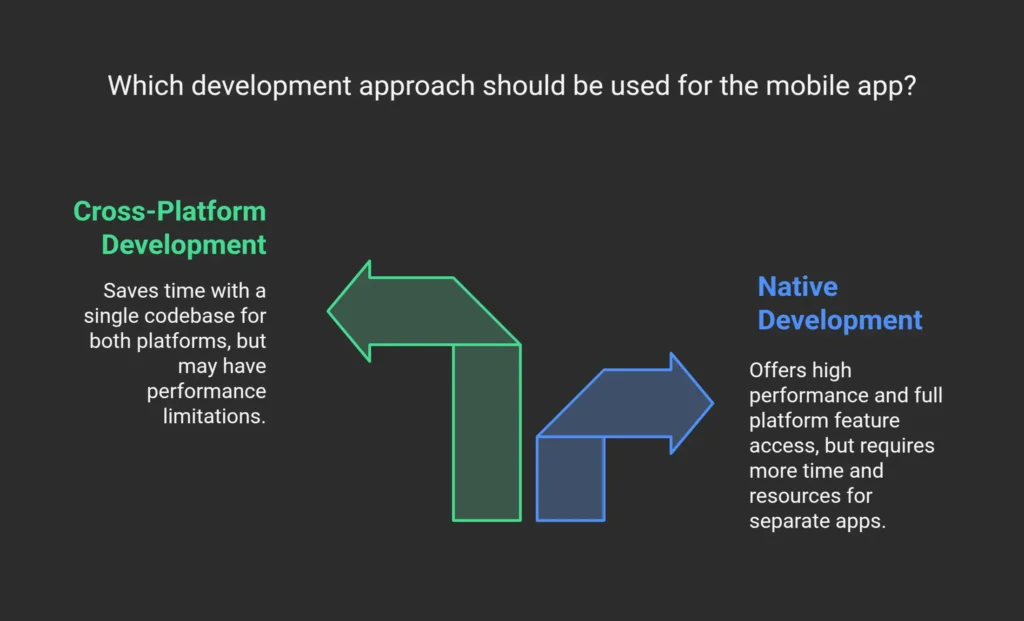
1. Native iOS Development
Apple provides developers with two primary programming languages for building iOS applications: Swift and Objective-C.
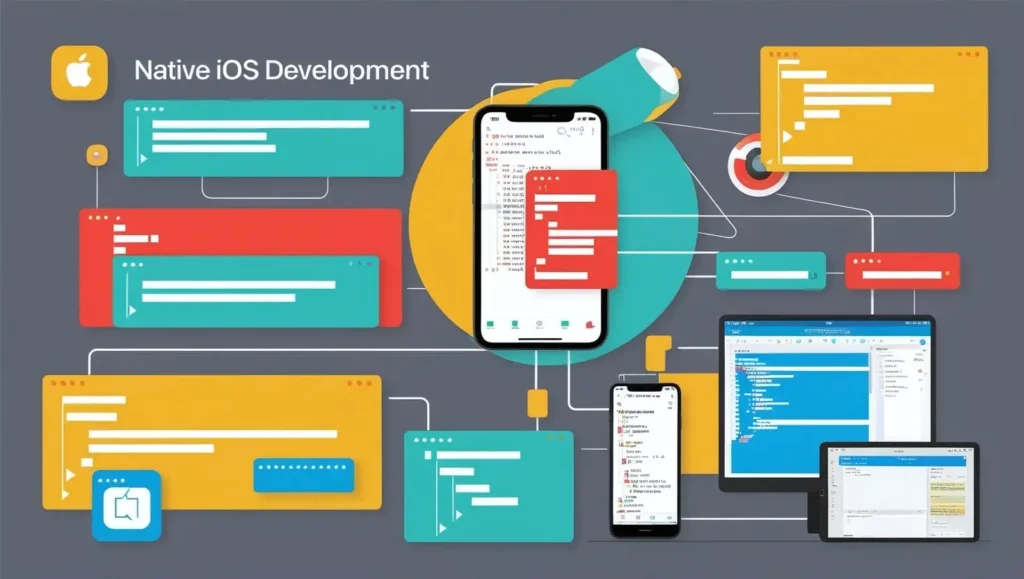
1.1 Swift
Overview
Swift is Apple’s official programming language for developing iOS, macOS, watchOS, and tvOS applications. Introduced in 2014, Swift was designed to be a modern, fast, and safer alternative to Objective-C. It features a clean syntax, improved performance, and advanced memory management, making it a top choice for iOS developers.
Key Features
- Modern Syntax: Swift’s concise and readable syntax reduces development time and improves code maintainability.
- Type Safety & Error Handling: Built-in safety mechanisms prevent crashes and runtime errors.
- Performance Optimization: Faster execution compared to Objective-C, making apps more efficient.
- Memory Management: Uses Automatic Reference Counting (ARC) to optimize memory usage.
- Interoperability with Objective-C: Supports seamless integration with existing Objective-C projects.
- Concurrency Support: Swift’s concurrency model enhances the performance of complex applications.
Best Use Cases
- Ideal for new iOS app development due to its speed and modern features.
- Best suited for apps that require high performance and seamless integration with Apple’s ecosystem.
- Preferred for machine learning and augmented reality (AR) applications leveraging Apple’s Core ML and ARKit frameworks.
1.2 Objective-C
Overview
Objective-C is an older programming language that was the standard for iOS development before Swift. Despite being largely replaced, it is still used for maintaining legacy applications and working with certain frameworks that haven’t been fully updated for Swift. Known for its object-oriented capabilities and dynamic runtime, Objective-C provides flexibility but has a steeper learning curve compared to Swift.
Key Features
- Dynamic Runtime: Enables advanced features like method swizzling and message passing.
- Mature and Stable: A well-established language with a vast ecosystem of libraries.
- Interoperability with Swift: Developers can use both languages within the same project.
- Manual Memory Management: Uses both Automatic Reference Counting (ARC) and manual retain/release cycles.
- Extensive Libraries: Works seamlessly with Apple’s older APIs and frameworks.
Best Use Cases
- Maintaining and updating legacy iOS applications written in Objective-C.
- Developing apps that require deep integration with older Apple frameworks.
- Suitable for large-scale enterprise applications with existing Objective-C codebases.
2. Native Android Development
Android app development primarily relies on two programming languages: Kotlin and Java. Kotlin is Google’s preferred language for modern Android development, while Java remains widely used due to its extensive ecosystem and reliability.
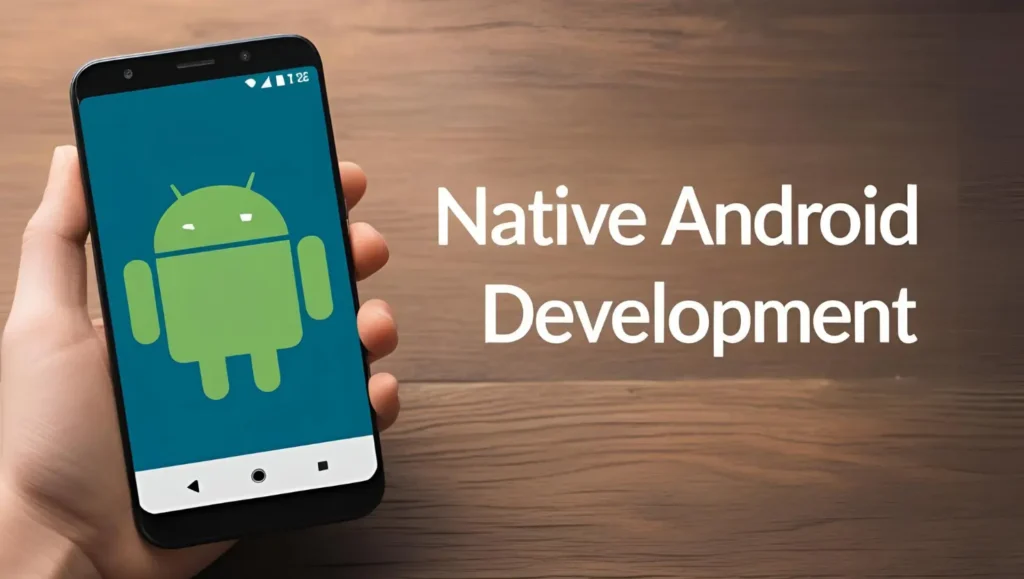
2.1 Kotlin
Overview
Kotlin is a modern, statically typed programming language developed by JetBrains and officially endorsed by Google for Android development. Since its introduction as an official Android language in 2017, Kotlin has gained popularity due to its concise syntax, enhanced safety features, and full interoperability with Java. Many developers prefer Kotlin because it simplifies coding while improving app performance and reliability.
Key Features
- Concise Syntax: Reduces boilerplate code, making development faster and more efficient.
- Null Safety: Prevents common null pointer exceptions, leading to more stable applications.
- Interoperability with Java: Allows seamless migration from Java without rewriting the entire codebase.
- Coroutines for Asynchronous Programming: Simplifies background task execution, improving app responsiveness.
- Modern Features: Includes lambda expressions, smart casts, and extension functions, enhancing developer productivity.
- Official Google Support: Ensures ongoing updates and a strong ecosystem of tools and libraries.
Best Use Cases
- New Android applications that require modern, efficient, and scalable solutions.
- Startups and fast-moving projects, where development speed and maintainability are crucial.
- Apps requiring asynchronous operations, such as messaging, streaming, and data-heavy applications.
- Migrating existing Java-based Android apps to a more modern, concise, and safer language.
2.2 Java
Overview
Java has been the foundation of Android development since the platform’s launch in 2008. Despite Kotlin’s rise in popularity, Java remains widely used due to its robustness, extensive libraries, and platform independence. Java applications run on the Java Virtual Machine (JVM), making them portable and scalable.
Key Features
- Platform Independence: The “Write Once, Run Anywhere” (WORA) principle allows Java apps to run on different systems.
- Rich Ecosystem: A vast collection of libraries, frameworks, and tools supports efficient development.
- Strong Community Support: A well-established developer community ensures continuous updates and troubleshooting resources.
- Garbage Collection: Automatic memory management reduces the risk of memory leaks.
- Multithreading Support: Enables the development of high-performance, concurrent applications.
- Security Features: Includes built-in security mechanisms, such as bytecode verification and access control.
Best Use Cases
- Enterprise-level applications that require scalability, security, and long-term support.
- Apps leveraging Java-based libraries that are not yet fully compatible with Kotlin.
- Legacy Android applications that need ongoing maintenance and updates.
- Large-scale Android development teams familiar with Java’s extensive ecosystem.
3. Cross-Platform Development
Cross-platform development allows developers to create mobile applications that run on both iOS and Android using a single codebase. This approach reduces development time and costs while ensuring a consistent user experience. Two of the most popular languages for cross-platform development are Dart (used with Flutter) and JavaScript (used with React Native).
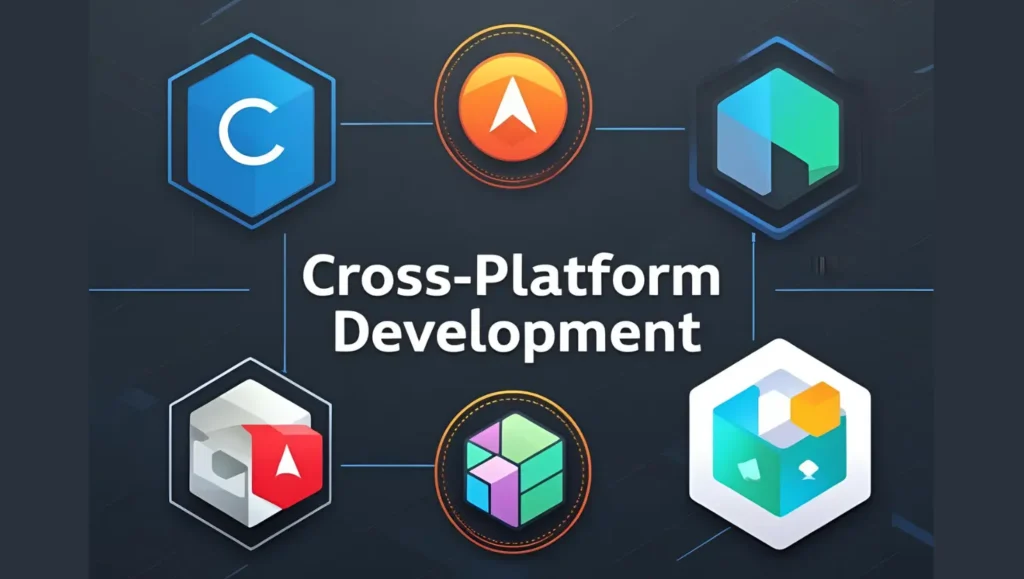
3.1 Dart (Flutter)
Overview
Dart is a modern, object-oriented programming language developed by Google, primarily used with the Flutter framework. It is designed for high-performance app development, allowing developers to build beautiful and fast mobile applications with a single codebase for both iOS and Android.
Key Features
- Hot Reload: Enables real-time UI updates without restarting the app, improving development speed.
- Single Codebase: Write once and deploy on both Android and iOS, reducing development effort.
- High Performance: Uses Flutter’s Skia graphics engine to render smooth animations and native-like interfaces.
- Rich UI Components: Includes customizable widgets that follow Material Design (Android) and Cupertino (iOS) guidelines.
- Strong Google Support: Backed by Google, ensuring long-term stability and frequent updates.
- Fast Execution: Compiles to native ARM code, making apps faster than traditional cross-platform solutions.
Best Use Cases
- Startups and MVPs (Minimum Viable Products) looking for a fast and cost-effective development process.
- Apps requiring smooth UI/UX with custom animations and high-performance rendering.
- Businesses aiming for consistent branding across multiple platforms.
- Developers with experience in object-oriented languages like Java or C# who want a modern alternative.
3.2 JavaScript (React Native)
Overview
React Native is a popular open-source framework developed by Meta (Facebook) that allows developers to build mobile applications using JavaScript and React. It bridges JavaScript with native components, ensuring near-native performance while enabling faster development.
Key Features
- Reusable Components: Write once and reuse across different platforms, ensuring a uniform UI.
- Fast Development with Hot Reloading: Allows real-time changes without restarting the app.
- Large JavaScript Ecosystem: Supports third-party libraries, making development flexible.
- Native Module Support: Enables integration with native Android and iOS code when necessary.
- Strong Community Support: A vast community of developers and contributors, ensuring continuous improvements.
- Cross-Platform Compatibility: Developers can build apps that function seamlessly across multiple platforms with minimal adjustments.
Best Use Cases
- Apps with simple to moderately complex UI that benefit from rapid development.
- Companies leveraging web developers who already use JavaScript and React.
- Projects requiring a balance between performance and development speed.
- Businesses prioritizing cost-effectiveness without compromising app quality.
Conclusion
Recap of the Best Languages Based on Platform Needs
- For iOS Development: Swift (best for modern apps), Objective-C (best for maintaining legacy apps).
- For Android Development: Kotlin (modern, concise, and Google-backed), Java (robust and enterprise-friendly).
- For Cross-Platform Development: Dart (Flutter) (high-performance, native-like UI), JavaScript (React Native) (fast, cost-effective, and widely used).
Factors to Consider When Choosing a Language for Mobile App Development
- Performance Needs: Native languages like Swift and Kotlin offer better performance, while cross-platform options prioritize development speed.
- Scalability: Java and Kotlin are well-suited for large-scale enterprise applications.
- Development Speed and Cost: React Native and Flutter allow faster, budget-friendly development with a single codebase.
- Ecosystem and Community Support: Consider the availability of libraries, frameworks, and developer communities.
- Platform-Specific Features: If your app requires deep integration with Android or iOS, native languages are preferable.
FAQ – Top Programming Languages for Mobile App Development
1. Which programming language is best for iOS app development?
The best language for iOS development is Swift because it is modern, fast, and optimized for Apple’s ecosystem. However, Objective-C is still used for maintaining older iOS applications.
2. What is the best programming language for Android app development?
Kotlin is Google’s preferred language for Android development due to its concise syntax, safety features, and full interoperability with Java. Java remains a strong option, especially for large-scale enterprise applications.
3. What is the difference between native and cross-platform app development?
Native development (Swift for iOS, Kotlin for Android) provides better performance and deep integration with the operating system but requires separate codebases for each platform. Cross-platform development (Flutter, React Native) allows developers to use a single codebase for both iOS and Android, reducing development time and costs.
4. Is Flutter or React Native better for cross-platform app development?
It depends on the project requirements. Flutter (Dart) offers high-performance UI rendering and is great for visually rich apps. React Native (JavaScript) is better for rapid development and leveraging the large JavaScript ecosystem.
5. How do I choose the right programming language for my mobile app?
Consider factors like performance needs, scalability, development speed, budget, and platform requirements. If you need high performance and deep OS integration, go with native languages (Swift/Kotlin). If you prioritize faster development and cost-efficiency, choose cross-platform options (Flutter/React Native).
